Diana and Meera select their favourite bits of Naked Science, including parajetting over the Himalayas, digging up Greek brothels and making the perfect cup of tea scientifically. Plus, Dr Hal blows up an ostrich egg and blasts a 'barking dog' down a seven-foot test tube. *No animals were harmed in the making of this podcast*
In this episode
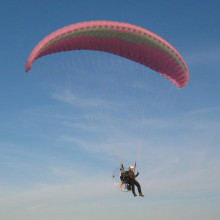
02:11 - Over Everest
Over Everest
with Giles Cardozo, Bear Grylls, Michael Vore
It's always been an ambition of man to fly but now the new technology and extreme sports have come together and brought this dream a little bit closer so that adrenaline junkies just like me can rise to even greater challenges than before and it seems that it's no longer impressive just to have been able to climb mount Everest; now the goal is to fly over it. We sent Meera Senthilingham to the London Science Museum to find out a bit more.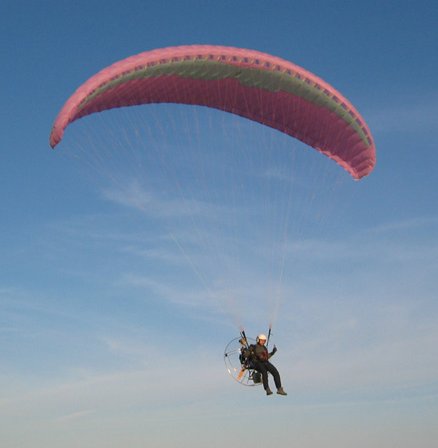
Meera - Imagine what it would feel like to fly and if you could fly what would it feel like to fly over something like Mount Everest, the tallest mountain in the world? Thanks to the new sport of paramotoring, which uses parajets to elevate you into the air and then paragliders to bring you back down, not only are people able to live the dream of personal flight but two Brits have managed to break the world record for the height reached using only a parajet. This year Giles Cardozo and Bear Grylls flew above the summit of Mount Everest and reached a height of 30,000ft. The challenge was known as mission Everest and was sponsored by technology company GKN. Now the equipment they used to accomplish this mission was recently displayed at the Science Museum in London so I went along to see how it all worked and find out just what it took to break this world record. I spoke to Giles Cardozo who not only flew up the mountain but also designed the equipment they actually used to get them up there. So I had to start by asking him just what a parajet actually is.
Giles - Well a parajet is an aircraft that you wear on your back just like a rucksack and a paraglider wing which you attach onto a harness. Using a thrust of this engine on your back with a propeller fitted to it, it moves you into the air and the wing gives you the lift you need. Together you've got a complete flying machine. You can fly up to 40mph up to thousands of feet, In this case we flew to 30000 feet with it.
Meera - People do this for social purposes as well. So what kind of heights will they do if they're just doing this for fun?
Giles - Really, the highest you go is about 5000 feet. Just above the clouds so you have a nice view but 15000 feet is the maximum altitude you can go to with a machine. People never really go that high.
Meera - So what was involved in creating the equipment to take you that extra 15000 feet?
Giles - Well, the most difficult thing really was making an engine that would still breathe where there's no oxygen or very little oxygen. At 30000 feet there's only a third of the oxygen in the air. The engine needs oxygen to run, that's what gives it its power. So we had to make a system that would drive an enormous amount of air or oxygen into the engine to make it produce enough power to keep us flying.
Meera - How did you actually manage that? What kind of details did you have to pay attention to when designing?
Giles - The most important thing was the fuel delivery which is computer-controlled and the supercharging. A supercharger, basically, is a like a tiny impeller which whizzes around incredibly fast. We got it spinning at 3000 times per second. You can imagine that's rotating very, very quickly. That would blast enough air into the engine. The computer then controls the fuel delivery and between the two of them we managed to keep the engine running and propelling us into the air.
Meera - When you're doing the flight itself you're using the engine to propel you but when would you essentially switch it off and use the wind?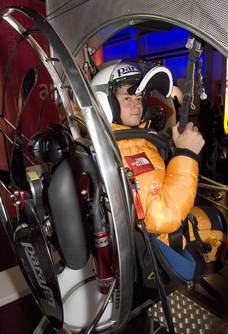
Giles - Yes, once you're up in the air you've gotta keep your finger on the throttle. You've got a little hand control and you squeeze that hand control and that keep the engine revved up and you keep going higher and higher. Now when you get to the maximum height you want to go you can switch off your engine and the wing keeps flying so you can just glide back down again. So what we did, we just flew to 30000 feet, switched off the engines and glid all the way back down to our starting point.
Meera - At heights like that the actual person himself must need extreme protection just to protect their own body.
Giles - Yeah, we had a wind-chill factor of about -70. We had 3 layers of clothing on board, a whole load of under-liners as well. We had oxygen systems. We'd really pass out under a minute at 30000 feet if we didn't have oxygen with us and we had a big helmet with two balaclavas on. We had all the kit on to make sure we kept nice and toasty inside our kit.
Meera - The amount of power that the actual engine must need to take you up: it's 100 horsepower. Could you compare that to something just so people can get an idea of just how much power that is?
Giles - Yes, I mean you're average family car produces maybe 80-100 horsepower. That's the sort of 4-6 seater car. We had the engine equivalent power strapped to our backs yet it weighed ten times less. That was the most difficult bit. It was getting an engine which will produce nearly 100 horsepower whilst being able to wear it quite happily on your back and then carrying your fuel with you and everything else. You realise how light the engine had to be to make it possible to actually make it work at all. If we added up everything including fuel, all our helmets, electronics, the whole lot: we weighed about an extra 80 kilos so more than my bodyweight. I think I was fitter before I did this that I've ever been in my life.
Meera - And what did it feel like to be at such a height?
Giles - Well, I think I'd dreamt of this moment for such a long time that obviously I was very excited. Also you feel very vulnerable because you're there amongst these huge mountains, miles and miles from anywhere. I think I was scared but I was also very excited. And just an incredible view, really to top it off. It was just staggering.
Meera - Giles' flying partner was adventure man Bear Grylls. He must have been facing some personal demons in the mission, having broken his back in three places in a previous parachuting adventure. I asked him how it felt to be hovering over the tallest peak in the world.
Bear - I always thought, God, you know, I wonder if it's going to be really, really terrifying. Being suspended on these little strings. But it wasn't, it just felt the most meant-to-be, magical extraordinarily privileged moment even though it was -40 degrees and you're so dependent on one little oxygen canister for keeping you alive and you're aware you're at your most vulnerable point. There was something I think we both felt that this was really meant to be and what a privilege. We'd had screaming winds for days. You know 100mph winds, massive snows. We just had this three hour window of absolutely still weather all the way up to 30000 feet. To get still winds at 30000 feet is unheard of if you speak to any pilot. You know, you always have at least 80mph tail winds or head winds. It all came together in those three hours of which we did feel the luckiest men alive.
Meera - I can't even begin to imagine the physical endurance required to survive at such a height, let alone having to control something that's suspending you in mid-air. To get you thinking about how high Mount Everest actually is, and therefore how high in the air the duo were flying on their own I'll leave you with this comparison from Michael Vor, a member of the GKN team.
Michael - When you think about it, 30000 feet is the height of an [jet] aircraft flying so when you go on your holidays and you're flying at that type of feet you can imagine looking out of the window and seeing a guy in a parachute basically flying past you, it's quite a challenge.
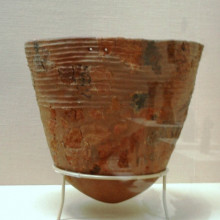
09:00 - Dating by Water Clock
Dating by Water Clock
with Dr Moira Wilson, Construction Scientist, University of Manchester
Meera - This is the Naked Scientists with Meera and Diana. Now, we're talking of things thermal. Here's a story on fired clay. Now normally, ancient bits of pot and brick are dated using carbon samples or thermoluminescense. But these techniques require lots of sampling and calibrating which takes time. So, it was quite a surprise when construction scientist, Moira Wilson, came up with a really simple method of dating ceramics...
Moira - I think the problem is, that most people think that carbon-14 dating can be used to date anything. And in fact, it can't. It can only be used to date things that have been living like, you know - plant material, bone, or whatever that's been exchanging carbon with the atmosphere throughout its lifetime. So you can't carbon date everything. That's the first thing and you certainly can't carbon date pottery. Thermoluminescense - that can be used to date pottery, this is actually quite a complicated thing. You need to excavate quite a large volume of materials from around the fragment of pot during the archaeological dig because you need this material to get a background count for calibration and thermoluminescense is calibrated against the carbon-14 dating curve. Now, our method is self-calibrating and doesn't require any material from around the excavated site. So, we can actually use it retrospectively on a lump of clay or a lump of pot or brick or whatever that's been sitting in a museum.
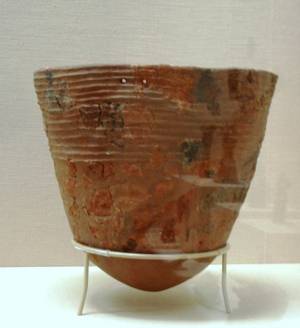 Diana - And how did you go about discovering this technique? What gave you the inspiration in the first place?
Diana - And how did you go about discovering this technique? What gave you the inspiration in the first place?
Moira - Right. Well it sounds a bit of a weird thing to do, but they say that chance favours the prepared mind. What we were actually working on at the time was moisture expansion in clay masonry and this is an engineering problem really in masonry construction that bricks expand. This is why you have expansion joints in walls, for example. So, as soon as the bricks come out of the kiln, they start expanding and carry on expanding forever. And this is why in general practice, you know, bricks would never be used straight from the brickyard. They'd be left for a few days. So, we started off, looking at the engineering problems.
Diana - So basically, you were trying to find a way of being able to predict how these bricks would behave after they came out of the kiln?
Moira - Yeah, but what we were looking at was moisture expansion in clay brick as in walls. In the process of doing so, we discovered a new law and we found that these materials expand as the rate that's proportional to the fourth root of time. For example, if you have a kilometre of wall that's about 200 years old, it will, in that course of that 200 years, expanded by about a metre.
Diana - Wow!
Moira - Yeah. But that doesn't mean the wall gets longer by a metre because what happens is that their expansion of each individual brick is accommodated by the mortar joints getting squashed up.
Diana - All right then, so what are the actual particulars of the technique that other archaeologists could do themselves eventually?
Moira - Right, so, how it works? As I say, the dating method relies on this new law. But fundamentally, what it relies on is that, as soon as any fired clay product is removed from the kiln, it starts gaining weight and expanding caused by the reaction between the ceramic and atmospheric moisture. And this, as we say, carries on forever. So, if we take the example of a whole brick, we would weigh the brick first of all and the weight now, is its original weight as it came out of the kiln plus the weight of the chemically combined water that's reacted with it over its lifetime. Then we heat the material to several hundred degrees to drive-off this chemically combined water. And then we wait again, so we can establish from that how much water it has gained over its lifetime. And in the case of a Roman brick, say, that would be about 40 grams. So, once we've driven all these chemically combined water off, it starts to recombine again. So, it starts all over again. So, we monitor this for a few days and it obeys our t1/4 (t-to-the-quarter) law so the data come out as a nice straight line. And from this, we can establish the rate at which the material is reacting with water. And if we know how much it's lost, we can work out how long it's going to take to gain that much water again.
Diana - So, each measurement is specific to a different type of ceramic?
Moira - It is and it's self-calibrating. So, we don't need any other external calibration data for it at all. It doesn't matter what the -the clay is made of anything and it very simply you see.
Diana - Can sort of ambient humidity change the result at all?
Moira - Nope! That is the other nice thing about it. This chemical reaction is incredibly slow. It's proceeding in increments of 1, 16, 81, 256, minutes, days, decades, whatever. So, the reaction rate, very fast to start and it slows down very, very quickly. And the reaction is sustained by an incredibly small quantity of water. So, there's actually sufficient moisture in the atmosphere to keep the reaction going. So, it doesn't actually matter whether your brick is sitting on the table or it's sitting at the bottom of a lake. As long as there's enough water there to sustain the reaction, any excess water, for example if the material is saturated, it doesn't contribute to the reaction. It just sits there, doing nothing.
Diana - Okay, and how accurate are the dates do you think that you could get from say, a bit of pottery, that's maybe, something around 2000 years-old? I mean, how accurate if it was that old, what would your date be?
Moira - Well, I think the biggest inaccuracy that we've got in our results is the supposed known age of the sample in the first place. I mean, we don't know that the brick was fired on the 5th of July, half past two in the afternoon or something like that, you know. We just know that it's Roman, for example. So, if we can date a Roman brick to 2001 years, that's great and it's certainly in the right ballpark. But as far as the magnitude of it goes, say we're looking at a Roman brick, we don't measure whole bricks, we measure 4-gram pieces. So, in the course of 2000 years say, we'd expect the 4-gram piece to have gained about 68mg in mass. Now, if we are measuring to a tenth of a millionth of a gram, that's actually a lot of units of measurement that are available to us. So, really, I suppose what you're saying is, how accurate are all the components of this. The mass measurements is virtually error-free, we would say.
Diana - Fantastic! You mentioned that you used a 4-gram sample, just like a starting point but is that the smallest you can go to or could you take a really small scraping and work from that?
Moira - Well, actually, given that we started off measuring the mass gain in whole bricks, which is about 2.5 kilograms, and then we move down to four grams, which is about half a size of a sugar cube, and now, we're down to milligram-size pieces. So, we're getting the sample size down all the time, which is an advantage.
Diana - Wonderful. And apart from archaeology, how else could this technique be used?
Moira - Well, because the mass going in these materials follows this precisely defined kinetic law, and because it's also temperature-dependent, we could, if we knew the precise dates of which something that's fired. And there are instances of this like Pompeii for example, was immersed in pyro-clastic ash in AD 79. So, we know the precise dates at which all the ceramics in Pompeii were heated up. We could then turn the method on its head and because we know the exact firing date, we could work out the average temperature that the material had been exposed to, over this precisely known lifetime. So, there might be a bit of climate change potential there as well.
Diana - So, what's the next stage in research in this technique? Are you going to apply it to objects you know the dates of first or are you just going to sort of have a play to see if you can debunk any other previous dates that have been taken on pottery?
Moira - It's going to be having a play really. We have this fantastic overwhelming international response from the archaeological community to this work. I mean, we're really shocked actually. So, the next stage of the work really is to validate the method. I mean, suppose you could certainly have already validated it. We proved the concept. What we need to do now is to work out a standard methodology for carrying out these measurements so that other people can do it. We also need to extend the time range of the samples that we've measured. We've only measured things to 2000 years old so far. So, we really like to look at some older samples and we've heard in our correspondence with archaeologists that pyro-technology apparently goes back to 16,000 BC. So, if we'd be able to get our hands on a piece of pottery that was 18,000 years old, we'd be really happy.
Diana - It seems too good to be true and the team were actually thrown to start with as they were given this medieval brick to test their theories on. And they just couldn't work out why the date came out as around 1939, but it turned out that the house in which the bricks had been stored was bombed during the second world war. So, the brick itself was actually re-fired, giving a much more recent date. So, you might not want to use this method on the bricks at Pompeii!
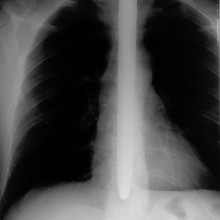
21:37 - The Science of Sword Swallowing
The Science of Sword Swallowing
with Dan Meyer
Dan - My name is Dan Meyer. I'm the president of the Sword Swallowers Federation International. I was honoured to receive the Ignobel Prize in medicine last year for a paper that I co-wrote called 'Sword Swallowing and its Side-Effects' that was published in the British Medical Journal.
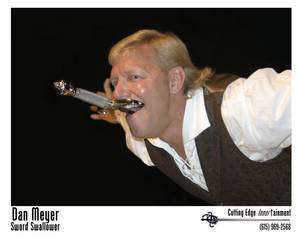 Chris - What are those side effects?
Chris - What are those side effects?
Dan - Well, one of them is death. We know of 29 sword swallowers who have died of sword-swallowing-related injuries. Other side effects are what we call sword throats. You get that when you begin sword swallowing.
Chris - Different from a sore throat?
Dan - Well, a lot of sword swallowing - you put a D on it and it sounds better!
Chris - Anatomically speaking, when you swallow a sword you are quite literally inserting something straight through your mouth and straight into your stomach.
Dan - Exactly, all the way down. People think it's just a simple - repress the gag reflex and that's it. That's really just the tip of the iceberg.
Chris - Or the tip of the sword, even?
Dan - The tip of the sword. You have to repress the gag reflex first, then you have to flip back your epiglottis in your throat, repress the peristalsis reflex which is 22 pairs of muscles all the way down to your stomach, nudge your heart to the left then relax your lower oesophageal sphincter just before it goes into the stomach then repress the wretch reflex in the stomach. There's a lot to it.
Chris - When did you start doing this?
Dan - I started learning in 1997. It took me three years of practise. It takes most people three years to seven years to learn how to do it. It takes another five years to master it.
Chris - When you say learning to switch off all those reflexes, there's something going the wrong way down my gullet and it's hard and it's long and it's a sword. How do you learn? This isn't self-taught, presumably? It's not something you do in front of the bathroom mirror.
Dan - Actually, it is self-taught. Almost everybody has to learn to do it themselves. Sometimes people will get a mentor that will teach them. Even if you have a mentor you have to do it yourself. You have to learn the mechanism inside the body to flip the epiglottis closed and do all that type of thing.
Chris - What possessed you to write this paper, that got you the Ignobel Prize?
Dan - Well, a serious injury actually. I had punctured my stomach while I was swallowing five swords at one time and as the president of the Sword Swallowers Association I knew all the sword swallowers world-wide. When I realised there was very little medical information in the medical journals or any of the medical books I said, we've got to research this so the doctors have some place they can turn for help. The results of our study was that nearly each of us has at least one serious injury at some point or another. You do this enough it's like Russian roulette. You will get hurt. One of the things we learned, curiously enough, for most sword swallowers, swallowing a single sword you don't have that many injuries comparatively speaking until you start doing something unusual like swallowing multiple swords. In my case, I was swallowing 5-6 swords with a macaw on my shoulder. She started climbing down my neck, down my collar; I turned my head while I had 5 swords down my throat and it pinched some. I had a little scissoring in my stomach and it [almost] cost me my life.
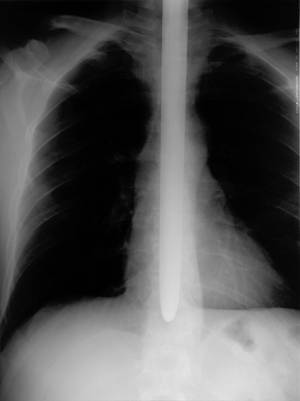 Chris - When did you realise that was a pretty serious injury? Was it immediate?
Chris - When did you realise that was a pretty serious injury? Was it immediate?
Dan - It was immediate. It was a pain in the chest. Sometimes we get that where it's some bruising, muscular bruising and that type of thing. If you drink a lot of cold ice water and let it go for a few days sometimes it'll heal itself. In this case it was okay for about a week. A week later I was swallowing five swords again and my stomach retched upwards. That time I knew it. I ended up going to the hospital. I had fluid around my lungs, my heart. I couldn't breathe. My heart couldn't beat very well because it had so much fluid around it. It almost killed me.
Chris - Have you, presumably, returned to the art since then?
Dan - I did exactly a month to the day. I had a film shoot to do. I did it and I've been back in the saddle ever since.
Chris - Is this your full time occupation? Is this how you earn your money?
Dan - It is. It's my full-time occupation. Actually it's also my passion. I absolutely love sword swallowing and studying it.
Chris - What did you do before you became a sword swallower?
Dan - I actually worked in the music industry in Nashville, Tennessee for about twenty years. Then I got married and moved to Alabama and was selling cars for a few months and absolutely hated it until my manager said 'you've got to do something to make the car sales very memorable.' I said, oh I can do that. So I offered to swallow a sword any time someone bought a car from me and it became famous in all the papers and all around the United States. It was a lot of fun and it kept me in practise too.
Chris - And now you do it professionally. Would you do it professionally for me today?
Dan - Possibly, yes. What I have here: it's a 30inch silver sword. You can feel it's a bit heavy.
Chris - This is no trickery. This is a real sword.
Dan - Yes. There's no buttons. Nothing will fold up in the handle. This one will go down to about my belly button or about my belt buckle. But it is -
Dan - It is solid steel. What I'm going to do is flip back my epiglottis, slide it down my oesophagus all the way down to my stomach. I'll let you narrate this as it goes down.
Chris - Okay. What he's now doing is licking the blade with his - he's actually got the sword in his mouth, running it sideways across his tongue to lubricate, presumably.
Dan - To lubricate it, also to feel for nicks and burs. Also to warm up the blade, it's a little chilly from being outside.
Chris - He's going to do it. Oh my god. It's right the way down through the back of his throat and down into his stomach. There's no blood on it either, which is a good thing. I might be a doctor but I didn't have a first aid kit which is ...When you do your talk for the Ignobel tour which is taking place at the moment what will you be saying to people? Obviously don't try this at home but what's the point you're trying to make?
Dan - One of the things that I do is try to prove to people that sword swallowing is real. A lot of people don't think it's real. They think it's died out. It's a 4,000 year-old art that started in about 2,000 BC but we also go through and describe our paper, the findings of our paper. The Ignobels are set up to make people think or to make people smile, to make them laugh and to make them think. We do a little of both. You think - that paper on sword swallowing injuries - of course people get injured! But when people see it and understand it people go oh my gosh, that is real! That's fascinating. It's a lot of fun.
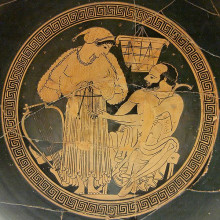
28:23 - Greek Brothels Started at Home
Greek Brothels Started at Home
with Dr Clare Kelly-Blazeby, University of Leeds
Diana - It's now time to look into... well, another form of entertainment I guess. As we go back in time to ancient Greece to learn about their brothels. It seems that over 2000 years ago in a classical world, pubs, brothels, and prostitution existed as they do today, but not quite in the same capacity. It turns out that charity was not the only thing to start at home but that brothels and drinking dens also occupied rooms of Greek houses. Clare Kelly-Blazeby believes that rather than having separate buildings for such entertainments, instead the Greeks would host the fun in their own front room.
Clare - Well, my research focuses on the archaeology of casual wine consumption in classical Greece. So, the architecture and material culture of bars and other non-elite drinking contexts. I couldn't understand why we unearthed so many drinking cups on excavations of classical sites that nobody was attributing them to tavernas. You know, there was plenty of talk about rich or public and domestic or sympotic drinking. These are usually always discussed, but bars weren't and I wanted to know why. So, I identified buildings commonly, but perhaps mistakenly, identified as houses as likely candidates for bars. So, I researched the published excavation report of these so-called houses, dating from the classical periods, and then carried out the analysis on the numbers and shapes of any excavated drinking pottery.
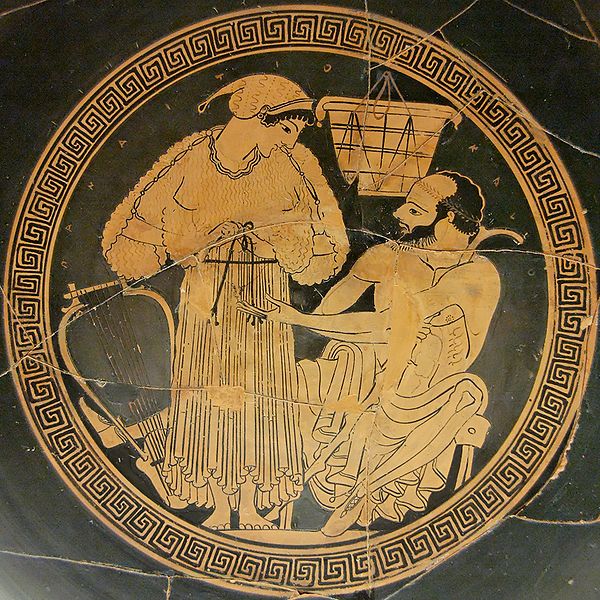 Diana - What did you find? What do you think was happening in the average home in ancient Greece?
Diana - What did you find? What do you think was happening in the average home in ancient Greece?
Clare - Well, I think there's an awful lot more trading commerce than we actually understand. But the first thing I'd like to say is there was no such thing as an average home in ancient Greece. Literary sources tend to deal with the elite. So, it's the elites and citizens of their city like Athens, which therefore receive most of the attention. Athens is an extraordinarily cosmopolitan city and what may be presumed to be the domestic arrangement of a native might not have worked for a foreigner. And rooms and courtyards would have been use for commercial purposes of the household if they so wished, and space could be rented out to traders without the right or the financial resources to own a house of their own. So, the use of houses is incredibly diverse in a classical world and I think we do them a great disservice by studying them and understanding them in a very restricted way that puts one nuclear family within four walls and calls it a house.
Diana - I see. So, there wasn't this idea that we have now where, you know, one person lives in this house or perhaps a family lives in this house and it's just theirs, no one else's.
Clare - No. I mean certainly, that would have existed. But you know, there was far more diversity. I mean, we know that there are apartment buildings in classical Greece as well. Not everybody could afford or even had the right to own property, especially in Athens, but we know that Athens is full of overseas traders and so these people had to be making use of space somewhere. And I think it's the houses that we should be looking at.
Diana - So, all this was happening two and half thousand years ago, but why are activities like drinking, brothels and gambling so commonly grouped together and you know, why are they all seen as the seedier indulgences even then?
Clare - Yes, undoubtedly. They undoubtedly were and I think the key is alcohol. Where there's alcohol, there's loss of inhibition and will power and the seedier and perhaps less reputable elements in society with no doubt have gathered where they could take more advantage and make most money. It's a timeless concept really.
Diana - Okay. So could these domestic brothels and pubs, could they have been common elsewhere in the classical world, do you think?
Clare - Yes, absolutely, absolutely. I mean, I look at five different sites as part of my doctoral thesis and they're scattered all over Greece and I make a case for a building in the site called Olympus, which is in the north of Greece. And then of course, Athens is then in the south. But I think absolutely, yes, you would have found these buildings, these activities going on all over Greece and all over the Greek world, certainly.
Diana - What about the Roman world as well? Do you think they might have taken any of this on into their cities?
Clare - For drinking and prostitution, unlike the Greek world, we have abundant information from the Roman world and anybody who's been to Pompeii will be more than familiar with what a Roman bar or a Roman brothel might look like. So, yes certainly. By the time they reach the Roman world, they become very, very distinct entities, and they're very clear to pick out on the archaeological record. But that was one of the reasons why I was so interested in Greece because I couldn't understand why it wasn't so obvious in the Greek archaeological records.
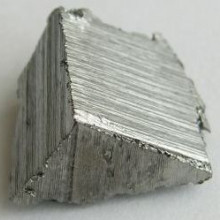
32:52 - Chemistry in its Element - Erbium
Chemistry in its Element - Erbium
with Andrea Sella, UCL, Department of Chemistry
A couple of years ago a colleague popped his head round my door and said, as chemists do, "I'm on the scrounge". It's quite common in chemistry departments - you want to do a quick experiment and just want a smidge of something without having to order a whole bottle. So you ask a friend whether they have a bit of whatever. "Have you got some erbium oxide?" "Sure,' I said. 'I've got some up in the lab."
A few minutes later my friend went off with a small bottle containing a delicate pink coloured powder.
A few weeks later I saw him in the stairwell and asked him how he'd got on with the erbium. "It's amazing stuff. You HAVE to see this." He replied. He pulled out of his pocket a sample vial containing some stunning pink crystals that glinted alluringly. "Wow!" I said - chemists are always impressed by nice crystalline products. "It gets better." he said mysteriously. He beckoned me into a hallway that had recently been refurbished. "Look" he said.
As the crystals caught the light from the new fluorescent lights hanging from the ceiling, the pink colour seemed to deepen and brighten up. "Wow!" I said again. We moved the crystals back into the sunlight and the colour faded again. Moving the crystals back and forth they glowed and dimmed in magical fashion.
It was a stunning example of the luminescence of the group of elements, the rare earths, of which erbium is a member. The red phosphor in the fluorescent lights must have contained erbium ions and since the emission wavelength of the phosphor exactly matched the absorption in my friend's crystals, resonant absorption occurs causing the magical glow.
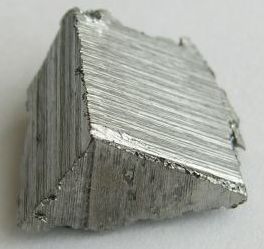 The rare earths were revealed to the world quite by accident by a Swedish lieutenant and rock-hound Carl Axel Arrhenius in 1787 in a quarry on the island of Vaxholm in Sweden, where the small town of Ytterby is located. The mineral that Arrhenius had discovered would lead to the discovery of 16 elements, all of them with remarkably similar properties. And the small village of Ytterby would provide the inspiration for the names of several of them: ytterbium, yttrium, yterbium, and the element of this podcast, erbium. Others got names like scandium, holmium, thulium in recognition of the region whence they first appeared.
The rare earths were revealed to the world quite by accident by a Swedish lieutenant and rock-hound Carl Axel Arrhenius in 1787 in a quarry on the island of Vaxholm in Sweden, where the small town of Ytterby is located. The mineral that Arrhenius had discovered would lead to the discovery of 16 elements, all of them with remarkably similar properties. And the small village of Ytterby would provide the inspiration for the names of several of them: ytterbium, yttrium, yterbium, and the element of this podcast, erbium. Others got names like scandium, holmium, thulium in recognition of the region whence they first appeared.
For over a century, controversy raged amongst chemists about these elements. And one of the key players in this chemical row was Robert Bunsen, the co-inventor with Gustav Kirchoff, of spectroscopy. Together they had had the idea of putting chemical compounds into a flame and analysing the resulting light with a prism. The spectra they observed proved to be amazing analytical tools - Kirchoff would use the method to identify elements on the sun. The method rapidly became one of the central pillars of chemistry.
But like many others working in the area, Bunsen was intrigued by the faint colours of the lanthanides, and their remarkable invariance. Erbium compounds, regardless of the partner - the oxide, the chloride, fluoride, amide, hydrocarbyls - are almost invariably faint pink. Over a period of three long years Bunsen methodically carried out the hundreds of crystallizations need to purify the elements, and then meticulously measured and sketched the spark spectra which contained many sharp bands of varying intensities. It was a spectroscopic tour de force for its time. At last, in May 1874, Bunsen finished writing his monumental manuscript. With a feeling of relief, he finally headed off to the local pub for lunch.
Imagine the poor man's horror when he got back to the lab and the manuscript was gone. A round bottom flask of water on the desk had focussed the spring sunshine from the window and set fire to the entire pile. Years of work reduced to ashes. After venting his despair in a couple of letters to friends, Bunsen painstakingly redid the work from scratch, laying the foundation of our understanding of the electronic structures of elements such as erbium.
We now realize that the valence electrons of erbium - of which there are 11 in its compounds, are buried deep within the core of the atom. Their location makes them remarkably insensitive to the world outside - which is why the colours are so consistent from compound to compound.
But what Bunsen could not know, was that there were spectroscopic bands in the infrared part of the spectrum and it is these that are what makes erbium so valuable to us today. As you are probably aware, most of our telephone calls and internet data transfers are carried by optical fibres. These gossamer thin threads of glass are of a rare optical perfection. But much like light passing through the atmosphere, scattering occurs - photons of light collide occasionally with the chains of glass in the fibre and the light is attenuated, limiting the length of fibre one can use. This phenomenon, called Rayleigh scattering, is the same that causes the daytime sky to be blue and sunsets to be red. The shorter the wavelength, the greater the scattering. Erbium light - at 1.55 microns, in the near infrared region of the spectrum - falls right where Rayleigh scattering is at a minimum but away from where bond vibrations of the glass absorb infrared light. Erbium lasers and amplifiers are therefore the hub around which all of our modern communications revolve. So the next time you phone a friend and say to them "It's a lovely day. Let's go to the park", think Erbium. It may only be the 44th most abundant element on our planet. But it punches far above its weight.
For more Chemistry in its Element, or the latest in Chemistry news from Chemistry World - visit the
Royal Society of Chemistry's Website.

42:50 - Hormones and the Money Markets
Hormones and the Money Markets
with John Coates, Judge Business School, Cambridge University
Meera - In light of the current economic situation, I've come down to the City of London to the trading floor of GFI group. I've come here to find out what underlies the actions taking place here to determine our market. Could human behaviour be playing a vital role in the state of our economy? To help me look into this is John Coates from the Judge Business School at Cambridge University, who's here with me know. Hello, John. How do the markets really work?
John - Essentially what we're doing in markets is buying and selling assets either by private companies or the government. The job of traders is to buy and sell these securities and in deciding whether to buy and sell them they have to make an assessment of the return they're gonna make on these assets over the life of holding them and the risk involved.
Meera - You've been looking into the physiology of traders and the City of London. What have you been looking into?
John - We've been following a hunch I had when I was working on Wall Street during the dot-com bubble. I was struck by the fact that traders at the time were acting very different from the way they were acting before the bubble and after the bubble. They were displaying classic symptoms of mania. They were overconfident. They had racing thought, diminished need for sleep and they were carrying themselves in such an odd way I began to suspect there was a chemical involved. The second thing I noticed was that women were relatively unaffected by the frenzy surrounding the dot-com bubble. During that time I was splitting my time between the trading desk at Rockefeller University on the Upper East side. There I came across a very powerful model that's been tested in a number of different animal species. I thought this model may be applicable to the financial markets. In this model that's called the winner effect two male animals go into a competition. Their testosterone levels rise in preparation for this competition. The winner comes out of this competition with even higher levels of testosterone. The loser comes out with lower levels. The winner may go into the next round of competition with already elevated levels of testosterone. This can give him an added advantage. It has effects on muscles and the cardiovascular system but more importantly it affects his confidence and his appetite for risk. He goes into this competition with a slight edge. It's what happens at the end-game of this model that's really interesting. As the testosterone levels build up in these male animals they become overconfident so, for example, they go out in the open too much. They pick too many fights, they patrol areas that are too large and they neglect parenting duty. They suffer an increased rate of predation. That's exactly what I was observing in traders during the dot-com bubble. They take risks that are, quite frankly, stupid.
Meera - How did you go about actually testing this in City traders?
John - I got access to the floor in the City and we took salivery steroids from a group of traders over a two week period to test that steroids were in fact responding to the money they were making and losing in the market and whether this, in turn, was affecting their trading performance.
Meera - What did you find?
John - We found that the traders, if they had high testosterone in the morning relative the the median levels, they made a lot more money for the rest of the day than they did on the days when they had low testosterone.
Meera - When most people think of testosterone they obviously associate it largely with males. Does this then mean that females are relatively unaffected?
John - Women have about 10% of the testosterone that men do. It's entirely possible that they're not subject to this kind of overconfidence.
Meera - But you're also looking into levels of cortisol, as well.
John - That's right. In the current environment that may be the more interesting steroid. When the market turns around it turns into a crash what can happen is that cortisol, which is a stress hormone, can become elevated in the bodies of traders. Cortisol, if you're exposed to it chronically at high levels for a long period of time, it can have a devastating effect on both the mind and the body. In terms of affecting traders decisions what it can do is affect the memories you recall. You tend to recall bad memories, negative precedents. You tend to see risk where maybe there is none. You become fearful, you feel anxiety. I think that decreases a trader's appetite for risk. While testosterone is causing people to take too much risk cortisol is causing people to take too little risk in the crash.
Meera - What do you think the current situation is now? Do you think there are going to be higher levels or cortisol in the traders at the moment?
John - It's not only how far the market has fallen. It's how long it's been falling. These traders have been under stress for almost a year and a half now. Their cortisol levels must be elevated. I'm sure there's a very good chance it's affecting their decisions.
Meera - You were mentioning that long-term effects of cortisol will have long-lasting effects on their minds. Is this something that companies should think about?
John - I guess so, yeah. It's something the Bank of England should be thinking about. Economics is built on the assumption that economic agents are rational, they respond to price signals. If you increase the price of something by raising interest rates people will stop buying securities. They don't in a bubble. On the flip side during a crash or a depression they lower interest rates and economic agents are supposed to respond to that by buying assets. They look more attractive. If these steroids are reaching such a level in our bodies that we become price-insensitive then monetary policy may no longer work and, in fact, that's what we see.
Meera - Do you think if the banks and the companies understood this physiology a bit more they could work together, say with neuroscientists, to try and get out of the economic situation that we're in at the moment?
John - We're in a bit of a mess at the moment. Cortisol is a hormone that responds not just to loss or injury (loss being in this case money) it also responds more powerfully to situations of novelty, uncertainty and uncontrollability. Within banks I think it's extremely important, although very difficult to create, an environment that minimises the trader's feeling of uncontrollability. Managers think they have to be pro-active as they say in business speak to show that they're doing something to improve the situation. Usually what they're doing is threatening to fire people. That's exactly the wrong thing you should be doing. We need some positive shock to come into the system of the very sort they're talking about now like the bail-out package passed in the US last week and been discussed this week in Britain and Europe to break this downward spiral of risk preferences.

49:43 - Explosive Chemistry with Dr Hal
Explosive Chemistry with Dr Hal
with Dr Hal, Brighton University
This week, Dr Hal showed us the following explosive chemistry experiments:
 | Exploding Eggs |
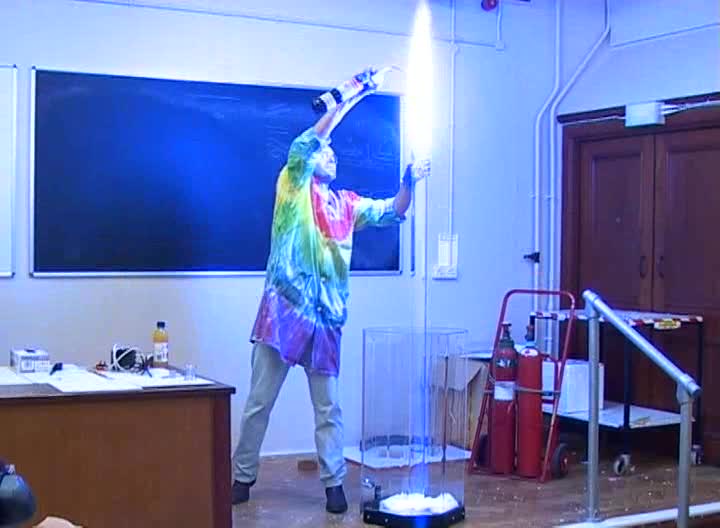 | The Barking Dog |
 | The Phosphorous Moon |
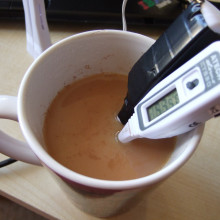










Comments
Add a comment